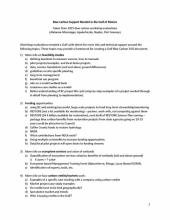
Coastal blue carbon is a newly recognized ecosystem service provided by coastal wetlands—including seagrass beds, mangroves, and salt marshes—to capture and store carbon. When coastal wetlands are degraded or destroyed, they release these greenhouse gases into the atmosphere. Bolstering awareness and valuation of blue carbon could lead to increased prioritization of coastal conservation and restoration projects, and increase public and private funding for these types of projects. Moreover, coastal managers are now being asked to consider the greenhouse gas implications of their decisions, and Gulf Coast National Estuarine Research Reserves have recently identified blue carbon as a priority topic. A 2015 Science Transfer project led by Restore America's Estuaries developed a Gulf Coast blue carbon network as a platform for sharing information and coordinating efforts to develop blue carbon tools and projects in the region. This project built on workshops by identifying end-user needs, establishing and supporting local working groups, providing technical assistance, and conducting a targeted Gulf Coast blue carbon “next steps ” workshop.
As part of this project, Coastal Training Program Coordinators at the Gulf of Mexico reserves compiled feedback from workshop participants and from follow-up phone calls to create this written assessment of blue carbon needs and opportunities. This document, which was referenced when planning additional project workshops, continues to be a reference for Restore America's Estuaries and others interested in advancing blue carbon outreach efforts on the Gulf Coast.